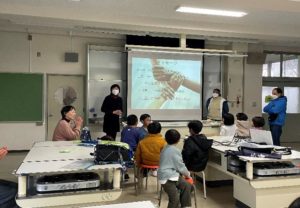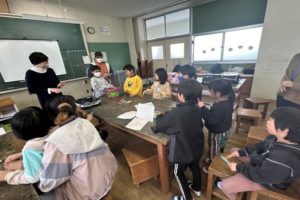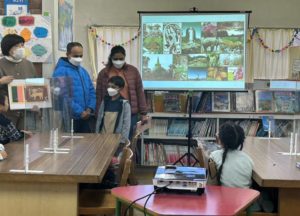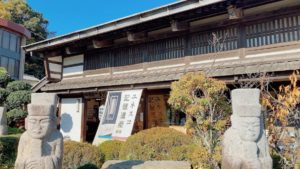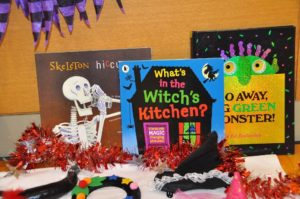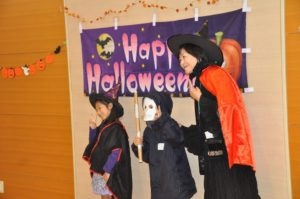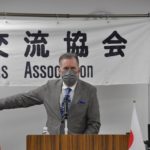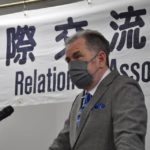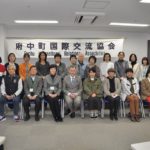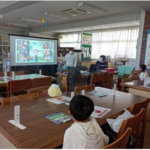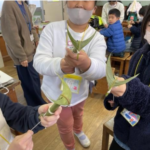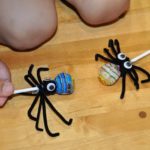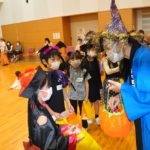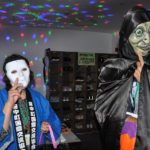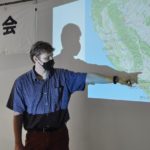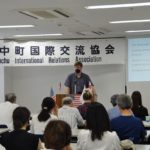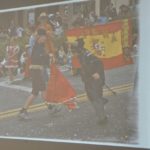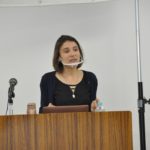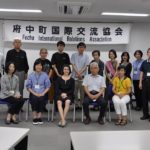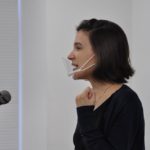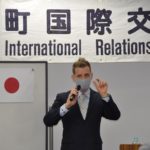‘Talk by a foreign guest’ featuring Dr. Eric Pyle, Art History Lecturer (Sunday, March 3, 2024 13:30-15:00)
Fuchu International Relations Association (FIRA) hosted ‘Talk by a Foreign Guest’ on March 3rd at Kusunoki Plaza. Our guest this time, Ms. Pamela Afi Tettey, is from the Republic of Ghana. We had 20 FIRA members and non-members in attendance.
The speaker, Ms. Tettey, is currently enrolled in the Hiroshima University Graduate School of Integrated Life Sciences as a scholarship recipient from the Ministry of Education, Culture, Sports, Science and Technology, and is currently pursuing her doctoral degree in the Bioresources Program. As the title of her lecture “Let’s learn about Ghana” suggests, she gave a wide-ranging introduction to her country of birth, including geography and an overview of the country, as well as its history before and after independence, religion, ethnic composition, culture, etc. It is said that there are more than 3,000 tribes and an equivalent number of languages on the African continent, while in Ghana, more than 250 languages are spoken by more than 8 tribes, including the Akan people, and Ms. Tettey said her family belonged to the Ewe family, which is supposed to be the mainstream in West Africa. Like other African countries, Ghana had a history of being a colony of European powers and a base for the slave trade before becoming independent in 1957. After a while, it established a republic and presidential system. The national flag, according to Ms. Tettey, has a three-color band: red band represents the bloodshed in the struggle for independence, yellow represents rich mineral resources, and green represents the rich natural environment such as forests. In the center is placed a “black star” which serves as a guidepost for Africa’s freedom. Among the various explanations given, one that left a unique impression was that in Ghana, you can tell the day of the week a person was born based on their name. Ms. Tettey’s middle name, “Afi,” is a name given to girls born on Friday, and “Kofi” to boys. Incidentally, Mr. Kofi Annan, the internationally known 7th Secretary-General of the United Nations, is also from Ghana, and you can tell from his name that he was born on a Friday.
Furthermore, she introduced the typical food of Ghana, the way of life of the people, and one example of this was a wedding ceremony. At weddings, where fairness is respected and all relatives are invited, there will be a large number of people, and everyone will dance their favorite dance. Ms. Tettey gave a demonstration herself, and one of the participants also tried out a dance performed by people of Ewe descent, creating a great excitement in the venue. Thanks to Ms. Tettey’s bright and cheerful personality, the lecture was enjoyable from beginning to end. During the Q&A session at the end, many questions and comments were received from the participants.
When many of us hear the word “Ghana,” we probably and casually associate it with “chocolate” and its raw material, cacao beans. It is true that Ghana is still one of the world’s leading producers of cocoa beans, but through Ms. Tettey’s lecture this time, we were able to learn more about the country specifically. Located in the western part of the African continent, facing the Atlantic Ocean, it achieved independence after a dark experience with colonization and the slave trade, and is a democratic country where diverse ethnic groups co-exist, and in addition to cocoa beans, its major product for export has been gold, and in recent years oil. The country is rich in staple foods such as yam, cassava, plantation bananas, corn, and rice, and is also blessed with agricultural and marine products that help people’s diet rich. Regarding connections with Japan, Ms. Tettey mentioned the Noguchi Memorial Medical Research Institute at the University of Ghana (Dr. Hideyo Noguchi actually died in Ghana).
Finally, Ms. Tettey stated that she would like to pursue research on the effective use of aquatic insects as a feed resource at Hiroshima University Graduate School, and that she would like to utilize this among others in the fishery resources field after returning to Ghana. Thank you, Ms. Tettey, for the wonderful and informative presentation. We look forward to seeing the successful completion of her doctoral research and further success in Ms. Tettey’s career and her future endeavors back in Ghana.


